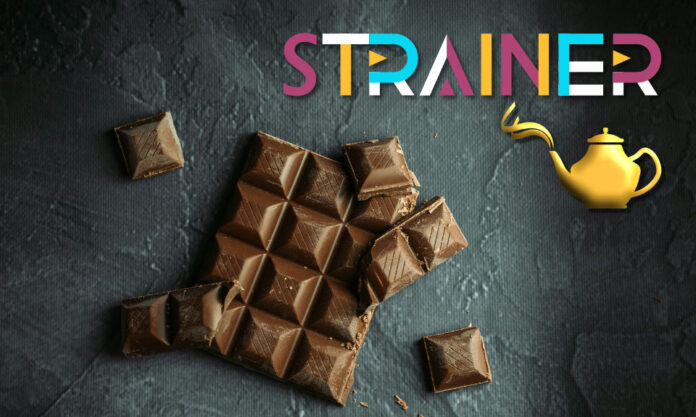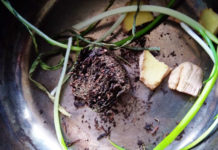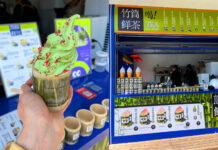If there’s one food that’s emblematic of everyday indulgence, that’s chocolate.
Delicious for most of us yet inextricably connected with fat, sugar (and caffeine, if you’re worried about that).
When my 4-year old daughter went for her second tooth-filling last month, the obvious culprit was chocolate. Yes, we are raising her in Shanghai, the saccharine city. And, yes, I should have instilled and enforced better brushing. But, rightly or wrongly, it was her fondness for chocolate that received the headline blame.
Dear readers, there may among you be some attempting to quit chocolate this very new year. If you remain on the wagon, I salute your rectitude.
And what if I could suggest that there’s a tea which gives some of this chocolatey pleasure, without the piles of calories?
I’ve long believed the keemun [祁门红茶] variety of Chinese red tea to have cocoa-like taste properties. To a greater or lesser extent, I find it there in most keemuns. Sure, it’s not the whole point of this tea; keemun isn’t some 1:1 doppleganger stunt; there’s plenty else to explore. But cocoa is something I usually hope to find in this variety from Anhui province. Usually, I am rewarded.
I must confess that I initially doubted this batch from my usual seller. Though he is from Anhui, and unlikely to cheat me deliberately after all this time, I entered his store again 1 week after purchase. As well as praising the (amazing) green tea he sold me, I asked whether he’d slipped the wrong red tea into the keemun-branded bag. He remained adamant. It was friendly fun. I wasn’t questioning its quality, only its keemun-ness. I couldn’t find the chocolate.
Well, I’ve found it now; it’s just in a different part of the tongue; further back, towards the root. And it’s a different chocolate experience that it’s redolising; this is a dark cocoa experience.
Just as with those chocolate bars with high percentage numbers flaunted on their wrapping, it takes a while to recognise the chocolate inside the dusty dryness.
That’s this tea. And now I’m into it, I’m really into it. The leaves infuse a lot of cups, but I’m replacing the leaves mid day anyway to reach deeper into that cocoa charm. I’m addicted.
Now, if you’ve fallen for the clickbait sentences earlier in this article, maybe you’re asking whether this dark, dark experience can really be called a “chocolate substitute”. And, honestly, the answer is “no”. But this isn’t the average keemun.
Drinking most keemuns is more like sucking on a raw, unroasted cacao bean (yes, the spelling is different from cocoa, but it’s the same stuff). Compared with this one, most keemuns are more creamy, less malty. Actually, infusing a raw cacao bean is also a good way of enjoying cocoa without the kilojoules. Keemun is another way.
Oh, I’ve just remembered another comparable taste-experience! That, also, was a huge surprise to me at the time. It was an antibiotic medicine. Yes. Strange. What’s more, it was brewed from pink crystals. But somehow that drink was doing something similar. As well as restoring hearing to my infected ear, it, too, was teasing this same region near the root of the tongue, teasing cocoa.
Or maybe this is just me. It’s difficult to say. I’ll have to keep waiting for more experiences, listening out for others to mention similar sensations. In the meantime, I’m having a great time expanding the parameters of keemun.
This is definitely a good one, as well as definitely just being one.
And our little daughter had a sip this morning, too. If we can somehow switch her on to unsweetened experiences like this, then her second set of teeth may stand a better chance than the first.












